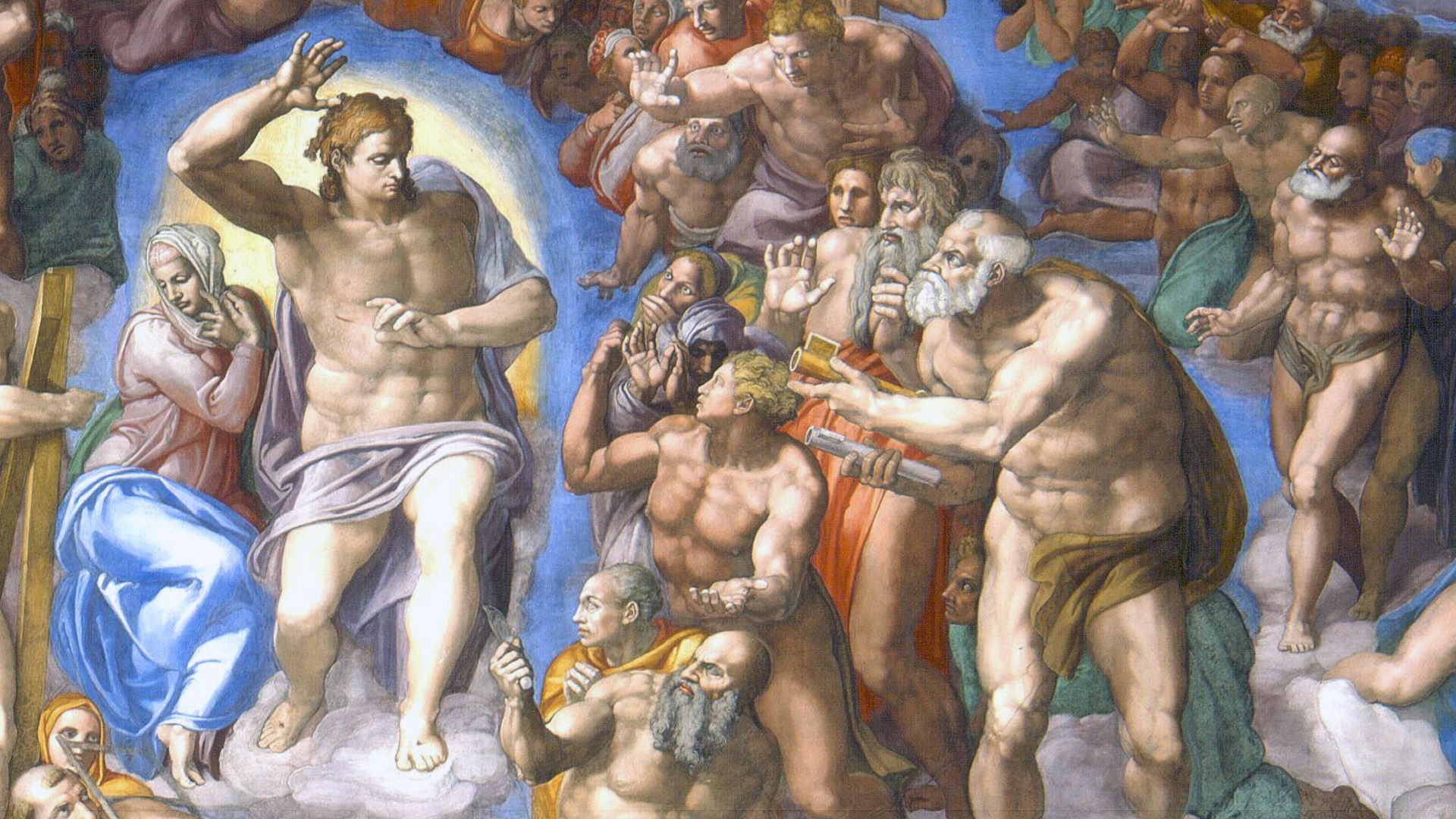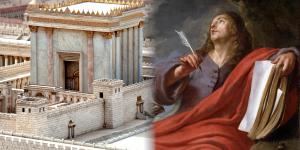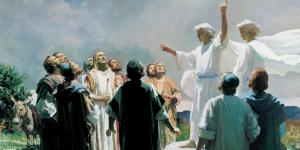You are here
What Did Early Christians Teach about the Three Degrees of Glory?

2 Corinthians 12:2, 4
The Know
On February 16, 1832, Joseph Smith and Sidney Rigdon had a wondrous vision while they were engaged in the inspired translation of the Bible in Hiram, Ohio. That vision, since canonized as Doctrine and Covenants 76, dramatically revealed that there were multiple levels of heaven, each with their own glory.1 This system of heaven was completely at odds with modern conceptions of heaven and hell; however, while it may have been new to nineteenth-century Christians, one might wonder if such a doctrine was present in the earliest teachings of the Christian church. Significantly, as scholars have studied ancient texts, particularly those relating to ancient Judaism and Christianity, a picture similar to the one revealed to Joseph Smith emerges.
Hugh Nibley was perhaps the first Latter-day Saint scholar to seriously demonstrate how ancient texts pointed to this tiered view of heaven. For example, he observed how Christian texts such as the Pistis Sophia describe how the multiple heavens are “beyond the veil.” Furthermore, “only the qualified can pass by one of these veils” until finally they enter the presence of God.2 This doctrine was also closely connected to the pre-mortality of man, and entailed our return to our heavenly home from whence we came to earth.3
Comparisons between Joseph Smith’s revelations on the three degrees of glory and early Christian teachings likewise show considerable similarities. The Lord revealed to Joseph Smith, for example, that the three levels of heaven were comparable in glory to the sun, moon, and stars each relating to the celestial, terrestrial, and telestial kingdoms, respectively (see Doctrine and Covenants 76:96–98). These three kingdoms of glory would be inhabited by those who had lived the laws required to enter therein (see Doctrine and Covenants 88:22–24), with the greatest of all blessings being available in the Celestial Kingdom, where God dwells.
A similar picture is found in Paul’s First Epistle to the Corinthians. In his defense of the Resurrection, Paul states that “There are also celestial bodies, and bodies terrestrial: but the glory of the celestial is one, and the glory of the terrestrial is another” (1 Corinthians 15:40). In other words, “Just as there are differences in the physical bodies of mortal humans and animals [as discussed in verse 39], there are also differences between mortal bodies and resurrected bodies.”4
Furthermore, Paul taught that just as there are differences between mortal and resurrected bodies, not everybody would be filled with the same glory in the resurrection: “There is one glory of the sun, and another glory of the moon, and another glory of the stars: for one star differeth from another star in glory. So also is the resurrection of the dead” (1 Corinthians 15:41–42). Many early Christians commented upon this verse, viewing it in terms of multiple glories in the resurrection. For example, John Chrysostom noted that “although there is only one resurrection, there will be great differences of honor from one body to another” and that “although they be all in God’s kingdom, all shall not enjoy the same reward.”5 Similarly, Origen taught that this verse referred to “the great difference among those who rise again in glory.”6
Origen likewise taught that the differing levels of heavenly glories related to one’s ability to dwell with God. The first two groups consisted of saints and other righteous individuals. The most righteous “are connected with the Father, being part of Him, and next to these [are] those who have come to the Saviour and take their stand entirely in Him.” A third group of resurrected people would consist of those who never repented of idolatry in their lives, and yet a fourth would be reserved for those who “have fallen away, not only from the good itself, but from the very traces of it.”7
This description matches what was revealed to Joseph Smith: those in the Celestial Kingdom would “dwell in the presence of God and his Christ forever and ever” (Doctrine and Covenants 76:62), those in the Terrestrial Kingdom would “receive of the presence of the Son, but not of the fulness of the Father” (Doctrine and Covenants 76:77), while those in the Telestial Kingdom would not be able to receive either blessing. A fourth group who committed the unpardonable sin are also seen by Joseph Smith, who had “denied the Holy Spirit after having received it, and having denied the Only Begotten Son of the Father, having crucified him unto themselves and put him to an open shame” (Doctrine and Covenants 76:35).
Likewise, in Paul’s Second Epistle to the Corinthians, he mentions a time when he was “caught up to the third heaven,” where he “heard unspeakable words, which it is not lawful for a man to utter” (2 Corinthians 12:2, 4).8 Scholars have long noted that this vision is consistent with a wide variety of early Jewish and Christian sources which note a visionary’s ascent to multiple levels of heaven where they are taught things never to be shared with those who were not initiated into the same ordinances they had experienced.9 As such, Paul’s reference to at least three heavens fits neatly into both an ancient Christian theology and the restored Gospel of Jesus Christ.10
Other New Testament texts were likewise influential in the early Christians’ views of heaven. For example, hearkening back to the Parable of the Sower in Matthew 13, Irenaeus taught that “there is this distinction between the habitation of those who produce an hundred-fold, and that of those who produce sixty-fold, and that of those who produce thirty-fold: for the first will be taken up into the heavens, the second will dwell in paradise, the last will inhabit the city; and that was on this account the Lord declared, In My Father's house are many mansions.”11 The spatial divisions of heaven into three distinct places based upon one’s righteousness is likewise found in other early Christian texts, such as the Shepherd of Hermas or Apocryphon of John.12
The Why
While early Christians taught extensively about three levels of heaven, which Hugh Nibley observed was often connected with the doctrines of baptism for the dead and Christ’s preaching in the world of spirits, later generations of Christians came to reject such a robust plan of salvation. As Nibley observed, “the whole doctrine, certainly an important one, has no place in the teachings of the later churches, ignorant as they were of the great plan of universal salvation.”13
The Lord would not leave such an important doctrine lost to history, however. As He revealed His great plan of salvation to ancient prophets, He restored that knowledge to Joseph Smith in a dramatic vision. Similarly, all Latter-day Saints can experience a similar vision retold through the Temple Endowment, as we symbolically and ritually pass through the three heavens, are taught “unspeakable words, which it is not lawful for a man to utter” outside of the temple, and finally symbolically enter the presence of God, just as was experienced by ancient prophets and disciples of Christ.14
Further Reading
Hugh Nibley. “Treasures in the Heavens,” in Old Testament and Related Studies (Provo, UT: FARMS, 1986), 171–214.
Hugh Nibley, “Baptism for the Dead in Ancient Times,” in Mormonism and Early Christianity (Provo, UT: FARMS; Salt Lake City, UT: Deseret Book, 1987), 109–113.
Larry E. Dahl, “Degrees of Glory,” in Encyclopedia of Mormonism, 4 vols., ed. Daniel H. Ludlow (New York, NY: Macmillan, 1992), 1:367–369.
Richard D. Draper and Michael D. Rhodes, Paul’s First Epistle to the Corinthians (Provo, UT: BYU Studies, 2017), 794–818.
Barry Robert Bickmore, Restoring the Ancient Church: Joseph Smith and Early Christianity, 2nd ed. (Redding, CA: FairMormon, 2013), 171–177.
- 1. For an excellent summary of Joseph Smith’s revelations on this matter, see Larry E. Dahl, “Degrees of Glory,” in Encyclopedia of Mormonism, 4 vols., ed. Daniel H. Ludlow (New York, NY: Macmillan, 1992), 1:367–369.
- 2. Hugh Nibley. “Treasures in the Heavens,” in Old Testament and Related Studies (Provo, UT: FARMS, 1986), 186.
- 3. For a discussion on this, see Nibley, “Treasure in the Heavens,” 171–179. Nibley also noted in “Treasures in the Heavens,” 212n118 that “The progress of the soul in the afterworld, with three main degrees of glory, is found in Egyptian funerary literature” such as the Book of Breathings, further supporting the antiquity of this revealed truth.
- 4. Richard D. Draper and Michael D. Rhodes, Paul’s First Epistle to the Corinthians (Provo, UT: BYU Studies, 2017), 798. It should also be noted that the Joseph Smith translation for verse 40 adds the detail of the presence of “bodies telestial; but the glory of the celestial, one; and the terrestrial, another; and the telestial, another,” further highlighting the similarities between Paul’s doctrine of the resurrection and that revealed to Joseph Smith.
- 5. John Chrysostom, Homilies on the Epistles of Paul to the Corinthians 41:4; cited in Gerald Bray, ed., 1–2 Corinthians, in Ancient Christian Commentary on Scripture: New Testament vol. 7 (Downers Grove, IL: InterVarsity Press, 1999), 172.
- 6. Origen, De Principiis Book 2, 10:2.
- 7. Origen, Commentary on John Book 2 Chapter 3.
- 8. Notably, Paul refers to this event in the third person: “I knew a man in Christ above fourteen years ago, (whether in the body, I cannot tell; or whether out of the body, I cannot tell: God knoweth;) such an one caught up to the third heaven” (2 Corinthians 12:2, emphasis added). Despite this apparent ambiguity, James D. Tabor has noted that “there is no question, despite the use of the third person, that Paul is reporting his own experience, that he is the ‘man in Christ.’ This is clear from 12:7–10.” James D. Tabor, Things Unutterable: Paul’s Ascent to Paradise in its Greco-Roman, Judaic, and Early Christian Contexts (Lanham, MD: University Press of America, 1986), 114. It appears that because what Paul had seen and heard was “not lawful for a man to utter,” Paul gave this experience the sacred respect he felt it deserved.
- 9. For a discussion on this phrase, see Tabor, Things Unutterable, 122. An excellent study of this and other Judeao-Christian texts relating journeys into multiple levels of heaven can be found in Leif Carlsson, Round Trips to heaven: Otherworldly Travellers in Early Judaism and Early Christianity (Saarbrücken, Germany: VDM Verlag Dr. Müller, 2008). Some of the texts discussed by Carlsson include 1 Enoch, 2 Enoch, The Testament of Levi, and The Apocalypse of Abraham.
- 10. It should be noted that various texts may describe more than three levels of heaven, often ranging from seven to ten. Jean Daniélou has noted that the texts describing seven heavens still match the context of three heavens: all of the texts describing these heavens place the seven heavens as the residing places of the angels, and therefore “the seven heavens [are] subdivisions of the second principal heaven.” Jean Daniélou, The Theology of Jewish Christianity (London: Darton, Longman, and Todd, 1964), 176n9. While some may have debated the exact number of heavens, the existence of multiple heavens was not yet in question and was still widely accepted among Christians during the third century, as illustrated by Origen’s statement that the scriptures clearly “teach the existence of ‘heavens’.” Origen, Contra Celsum, Book 6 Chapter 21.
- 11. Irenaeus, Against Heresies, Book 5, 36:2; citing Matthew 13:8 and John 14:2. As Draper and Rhodes have noted, “Irenaeus, bishop of Lyon, was a student of Polycarp, bishop of Smyrna. The latter had known John the Beloved. Through Polycarp a number of teachings held by ‘the elders, the disciples of the apostles,’ were transmitted to the third generation of Christians. One of these was the belief in three very different rewards in the afterlife as well as the punishment of hell.” Paul’s First Epistle to the Corinthians, 816. This line of authority would therefore place this teaching as apostolic in origin.
- 12. For a thorough discussion on these texts, see Alexander Kocar, Heavenly Stories: Tiered Salvation in the New Testament and Early Christianity (Philadelphia, PA: University of Pennsylvania Press, 2021), 67–91. Throughout his book, Kocar likewise discusses how heaven was often divided into three subdivisions according to the writings of Paul, John the Beloved, and other early Christian sects such as the Valentinians.
- 13. Hugh Nibley, “Baptism for the Dead in Ancient Times,” in Mormonism and Early Christianity (Provo, UT: FARMS; Salt Lake City, UT: Deseret Book, 1987), 113. For a discussion on early Christian views of baptism for the dead, see Book of Mormon Central, “Why Are People Baptized for the Dead? (1 Corinthians 15:29),” KnoWhy 687 (September 5, 2023).
- 14. For a discussion of the endowment fitting in to ancient heavenly ascents, of which Paul’s ascent to the third heaven would be one, see William J. Hamblin, “The Sôd of YHWH and the Endowment,” in Ancient Temple Worship: Proceedings of The Expound Symposium 14 May 2011, ed. Matthew B. Brown, Jeffrey M. Bradshaw, Stephen D. Ricks, and John S. Thompson (Orem, UT: The Interpreter Foundation; Salt Lake City: Eborn Books, 2014), 189–94; reprinted in Interpreter: A Journal of Latter-day Saint Faith and Scholarship 4 (2013): 147–154.
KnoWhy Citation
Related KnoWhys
Subscribe
Get the latest updates on Book of Mormon topics and research for free





